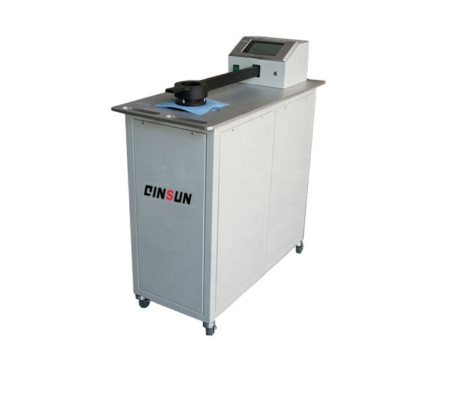- Qinsun Instruments Co., Ltd.
- Tell:+86-21-6780 0179
- Phone:+86-17740808215
- Address:No. 2578 Minhang District Gu Dai Road, Shanghai
- Contact:Mr. Li
- QQ:846490659
how to measure fabric thickness?

Measuring fabric thickness is an important parameter in evaluating and characterizing fabrics. There are several methods available for measuring fabric thickness, each with its own advantages and limitations. In this response, I will discuss five commonly used methods for fabric thickness measurement: direct measurement, air permeability test, pressure-sensitive tape method, ultrasonic method, and digital scanning method.
1. Direct Measurement:
Direct measurement involves using a specialized instrument called a thickness gauge or micrometer to measure the fabric thickness directly. This method requires placing the fabric sample between two anvils or contact points and applying a controlled pressure to obtain accurate measurements. The thickness gauge provides a digital or analog reading of the fabric thickness. Direct measurement is widely used due to its simplicity, accuracy, and reliability.
The air permeability test indirectly measures fabric thickness based on the relationship between air permeability and fabric thickness. In this method, a fabric sample is clamped over an air-permeable surface, and air is forced through the fabric under controlled conditions. The pressure drop across the fabric is measured, and using established correlations, the fabric thickness can be calculated. This method is relatively quick and non-destructive, making it suitable for quality control and large-scale testing.

3. Pressure-Sensitive Tape Method:
The pressure-sensitive tape method involves using a calibrated pressure-sensitive tape to determine fabric thickness. A short piece of tape is applied to the fabric surface, and the thickness of the compressed tape is measured using a thickness gauge or caliper. By subtracting the original tape thickness from the compressed tape thickness, the fabric thickness can be determined. This method is simple and suitable for thin and flexible fabrics.
4. Ultrasonic Method:
The ultrasonic method utilizes sound waves to measure fabric thickness. An ultrasonic transducer is placed on one side of the fabric, and a receiver is placed on the other side. The transducer emits ultrasonic waves that pass through the fabric and are received by the receiver. The time taken for the ultrasound to travel through the fabric is measured, and by knowing the speed of sound in the fabric, the thickness can be calculated. The ultrasonic method is fast, non-destructive, and can measure thick and multilayer fabrics.
5. Digital Scanning Method:
The digital scanning method involves using a specialized instrument known as a 3D scanner or profilometer to create a three-dimensional profile of the fabric surface. The scanner captures multiple data points across the fabric surface and generates a digital representation of the fabric. By analyzing the captured data, including the distance between points, the fabric thickness can be calculated. This method is highly accurate, provides detailed information about fabric structure, and can be used for complex fabric geometries.
It is important to note that each method has its own advantages and limitations, and the choice of method depends on factors such as fabric type, thickness range, sample size, accuracy requirements, and available equipment. Additionally, ensuring proper sample preparation, including fabric conditioning and sample size standardization, is crucial in obtaining consistent and reliable measurements.
In conclusion, measuring fabric thickness can be achieved through various methods, including direct measurement, air permeability test, pressure-sensitive tape method, ultrasonic method, and digital scanning method. Each method offers unique features and can be applied depending on the specific requirements of the fabric and the intended application. Choosing the appropriate method and following standardized procedures will help ensure accurate and reliable fabric thickness measurements.





